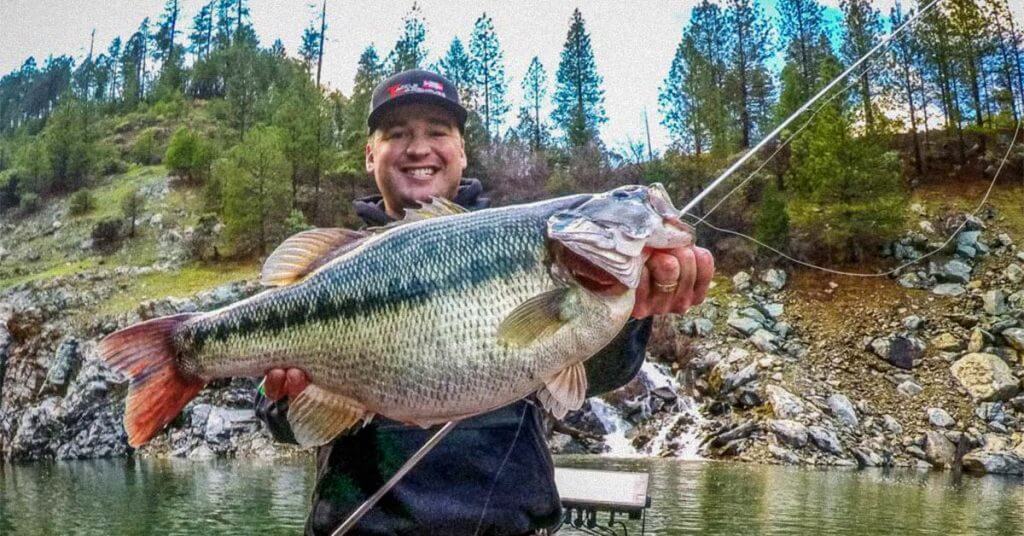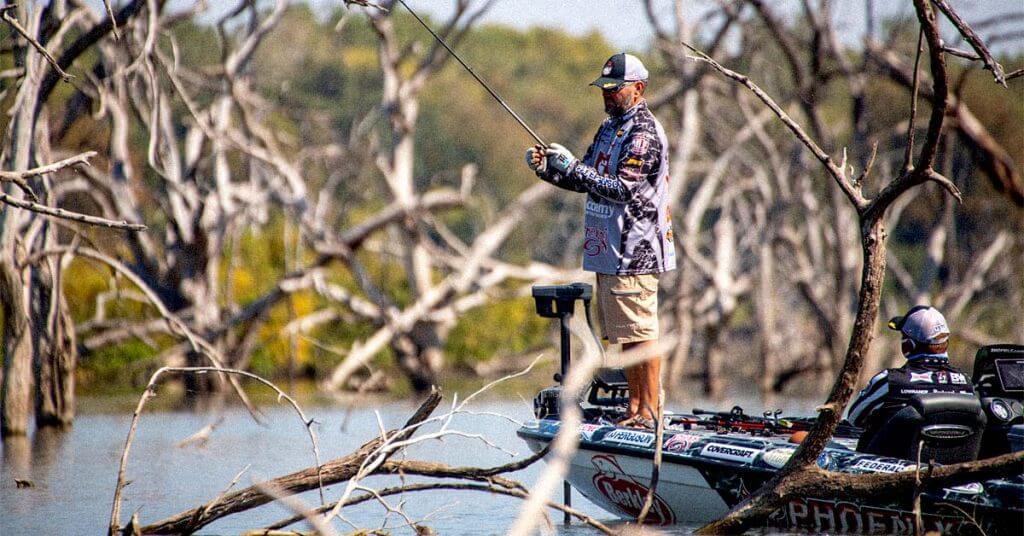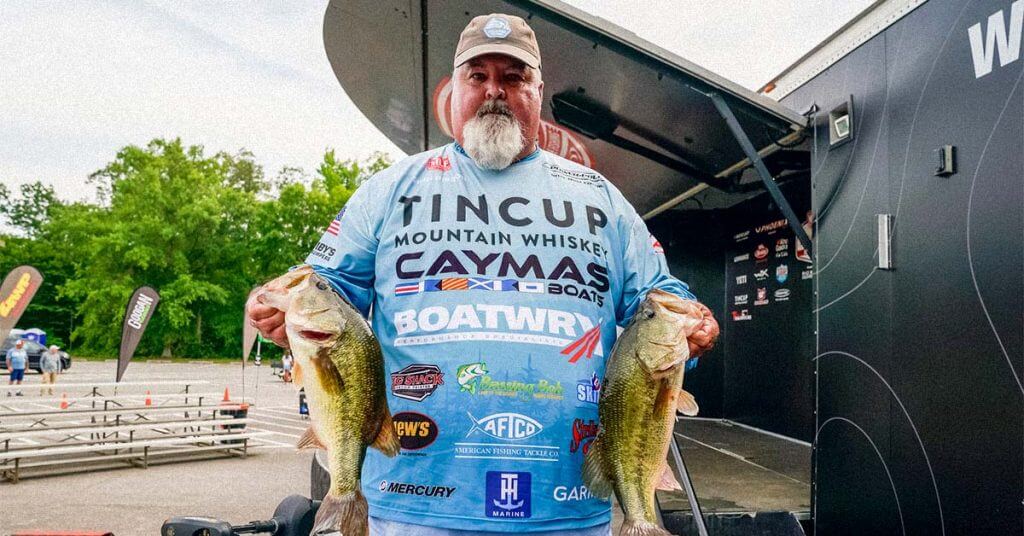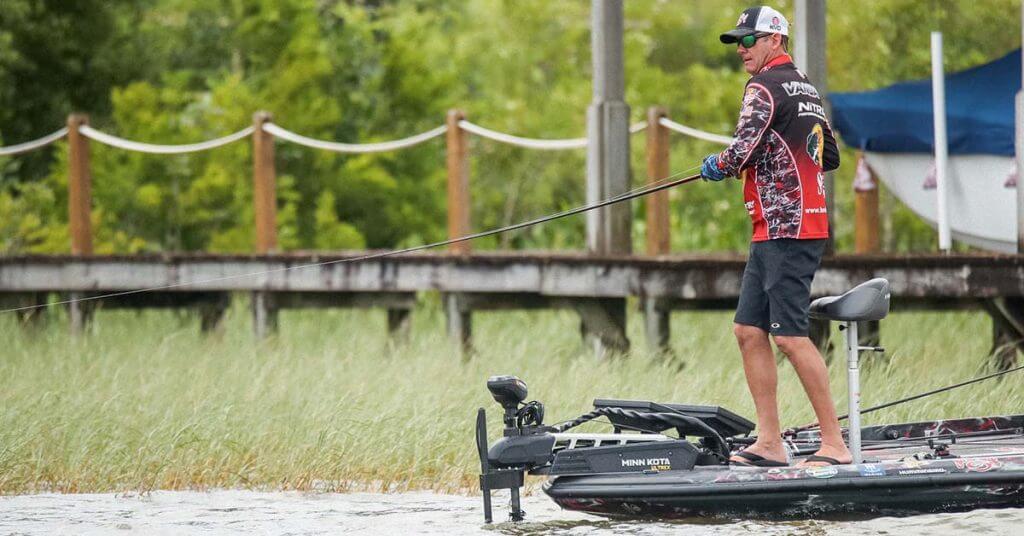
Matt Becker catches big smallmouth bass by reading how the fish react to changing conditions (photo by Jody White/Major League Fishing)
We’ve all been there.
We experience a day of great fishing on one part of the lake and we feel like a pro. We can’t wait to go back to that magic spot the next day…but history doesn’t repeat itself.
The fish moved and we struggle to locate them again.
The baits we used the day before only produce a few bites, and the tactics that were so productive a day earlier fall flat.
Everyone goes through that scenario, even the top pros. But Matt Becker, 2023 Angler of the Year on the Bass Pro Tour, knows there are ways to figure out the puzzle and not only find the bass again, but make them hit as well.
“I try to not only find the bass in practice, but determine where they will go if conditions change,” said Becker, who is from Ten Mile, Tenn. “I try to stay ahead of the game.
“They don’t swim clear across the lake, but they’ll move. You just have to figure out how they react to certain conditions.”
YourBassGuy.com asked Becker how he deals with some of the challenges bass fishermen encounter, and he provided the answers.
We hope you will be able to use his strategies to put more bass in your livewell.
Table of Contents
Those Nasty Cold Fronts

Fishing can be challenging after a cold front, but there are still ways to get them to bite (photo by Joe Sills/Major League Fishing)
Cold fronts are a bass fisherman’s most-feared enemy.
One day, the weather is warm and overcast and the bass are chewing. Then a storm hits overnight, drops the temperature and leaves bluebird skies in its wake. And the bass get lockjaw.
What do you do? Becker immediately forces himself to slow down.
“Bass become lethargic when it suddenly turns cold,” he said. “Their food also slows down, and you have to react by slowing down too.
“Either drag your bait slowly across the bottom or wind your spinnerbait or crankbait slower than you normally would.”
That slower presentation mimics what is occurring in the aquatic world.
The bass often aren’t going to be out roaming around as freely as they would in normal conditions. For example, the bass might sulk in heavy cover such as vegetation or brush. .
Think more in terms of getting a reaction strike rather than a feeding response. The strike zone shrinks after a cold front passes, but bass still can be caught, Becker said.
Heavily Pressured Water

Most bass fishermen treasure the peace and quiet of their surroundings. But there are times when they have to fish in pressured water (photo by Sean Ostruszka/Major League Fishing)
Yeah, it’s great to have a section of a lake all to yourself. But on some popular bodies of water, that’s not going to happen, especially on weekends.
In the spring, you’re more likely to encounter a crowd in places you want to fish.
So what do you do?
“The first thing I do is downsize all my baits, my line, my hooks, everything,” Becker said. “I go as light as possible.
I look at what everyone else is throwing ,and I want to finesse the fish. I want my baits to be smaller, more natural-looking than the bass are used to seeing.
“Something like a small soft-plastic swimbait or maybe a drop-shot rig with a smaller plastic bait. Sometimes, doing something different than the crowd can produce in heavily pressured water..”
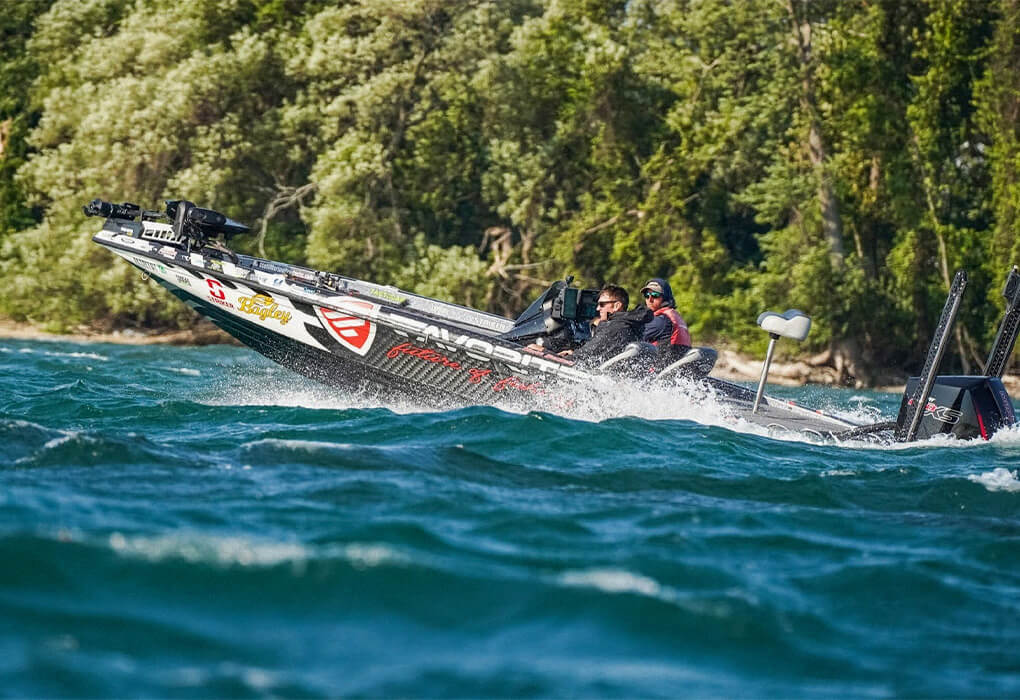
The wind can be your friend when it comes to bass fishing (photo by Rob Matsuura/Major League Fishing)
Dealing with the Wind
When a gusty wind sweeps across the lake, some fishermen will do everything they can to reach calm water.
Wrong move. As long as you can safely navigate, a moderate wind can provide a big advantage.
“I like to use a swimbait, a spinnerbait or a chatterbait and cast to any structure where the wind’s blowing in,” Becker said. “The wind stirs up the whole ecosystem.
“The baitfish move in to feed or they are swept into the shallows, and the bass follow them in.”
One caution: If the wind is strong, don’t even consider a slow-moving bait. If you’re casting to a place where the wind is blowing in, it would be too difficult to fish. Instead, use something you can retrieve quickly to keep up with the wind.
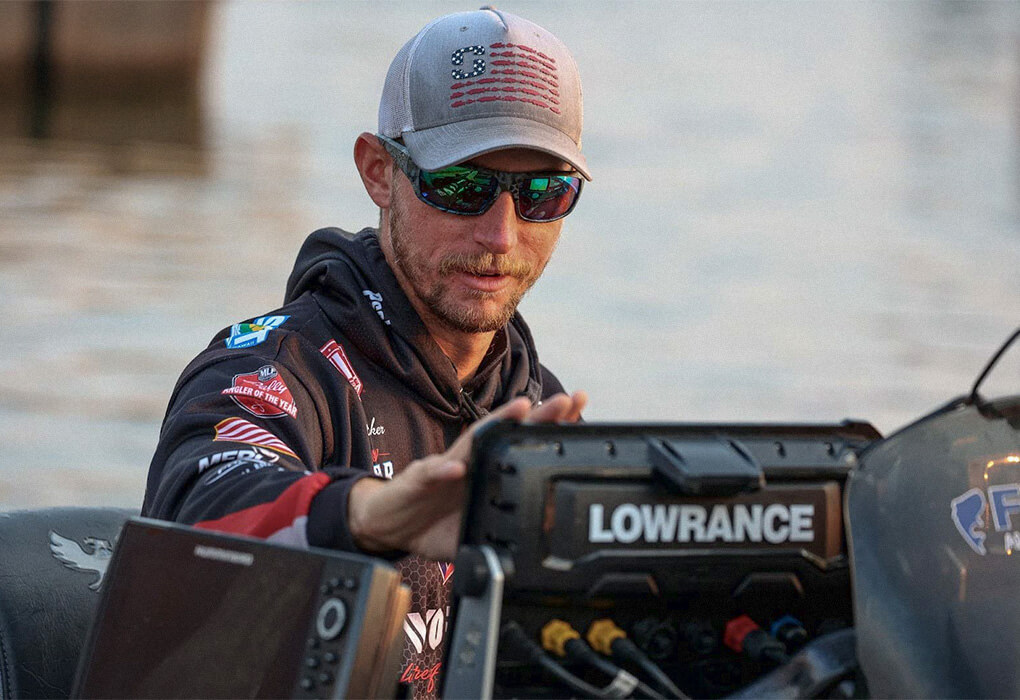
Pro bass anglers such as Matt Becker have to deal with ways to make their lures stand out in waters filled with baitfish (photo by Matt Brown/Major League Fishing)
Too Many Baitfish
They say that bass never stray too far from their food. But what do you do when there’s too much food down there?
Do you move, trying to find a place where you have to compete with less of the real thing? Or do you stay and try to make your lure stand out?
Becker often opts to stay.
“I like to use a jerkbait when there’s lots of shad around,” he said. “You can work it so that it looks like a struggling shad and an easy meal.”
If that doesn’t work, Becker will take an opposite approach.
“At times, I will throw something totally different than what they are eating,” Becker said. “Bass can be curious, and sometimes they will go after something that stands out.”
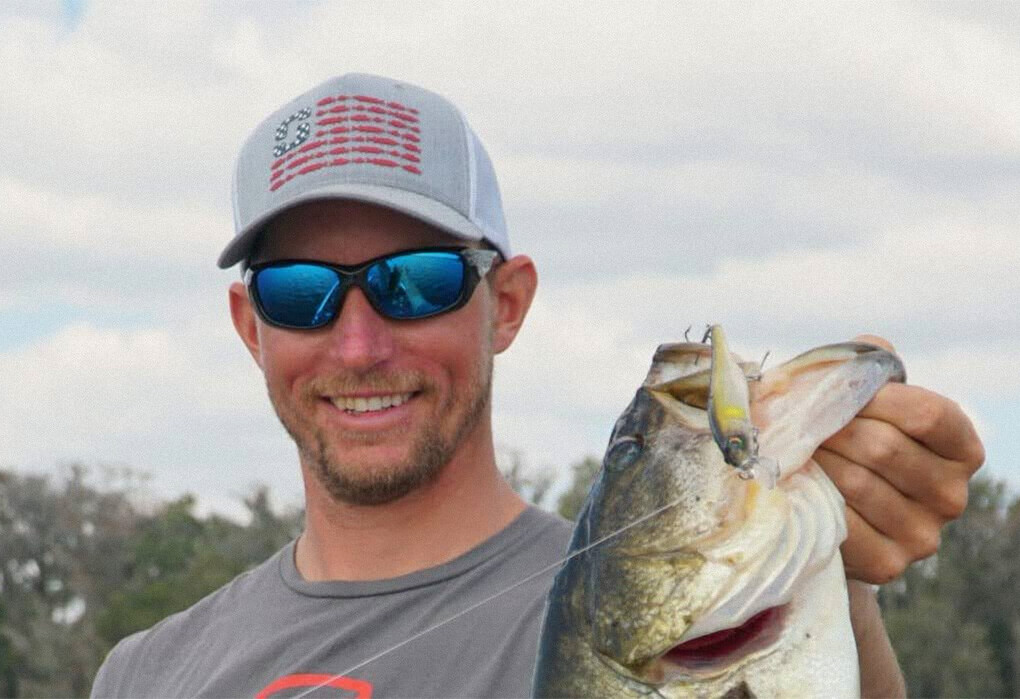
Looking for a good year-round bait? Try the suspending stickbait, Matt Becker advises (photo by Tyler Brinks/Major League Fishing)
A lure for all seasons
Most fishermen think of the suspending jerkbait as a cold-water lure designed to imitate a struggling baitfish. But Becker says it is far more versatile than anglers think.
In fact, he identifies the jerkbait as his favorite year-round bait.
“Bass will always feed on baitfish,” he said. “And the jerkbait looks like a dying baitfish. I’ll catch bass on it year-round.”
He will vary the cadence of his retrieve based on water temperature. In cold water, he will pause the jerkbait between twitches to imitate a stunned baitfish.
But in warmer water, he will increase the speed of his retrieve to mimic the baitfish’s activity.His favorite type of jerkbait? The Bill Lewis Lures Scope Stik, a jerkbait designed for use with forward-facing sonar.
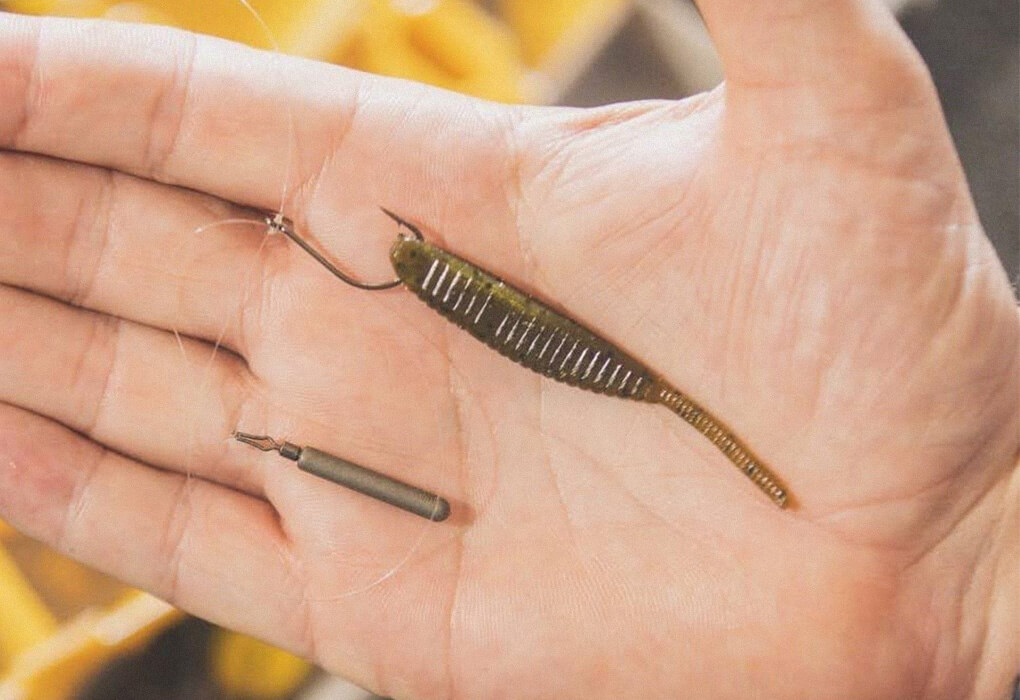
Yamamoto’s Shad Shape Worm is one of Matt Becker’s go-to lures when he fishes a drop-shot rig for smallmouth bass (photo courtesy of Matt Becker)
A Killer Smallmouth Technique
Small baits can elicit big bites when fishing for smallmouth bass.
One of Becker’s favorites is a Yamamoto Shad Shape worm fished on a drop-shot rig.
“It’s just a great technique to go to when you’re struggling to get bites,” Becker said. “It’s a technique the bass never get used to.
“It just looks so natural.”
The rig features a small hook and plastic bait such as the Shad Shape Worm tied to the line about 12 to 18 inches above a weight. The weight hits the bottom and the plastic bait hovers a short distance above.
It’s a finesse technique that is especially effective when smallmouth or largemouth are reluctant to hit larger power baits. Becker used the drop-shot to catch fish in four of seven tournaments on the Bass Pro Tour in 2023.
“It’s just a very versatile technique,” he said.
Becker fishes the rig on a a 7-foot-2 medium-heavy Favorite Hex spinning rod with 15-pound test Seagaur Smackdown braid and an 8- to 12-pound test Seagaur fluorocarbon leader.
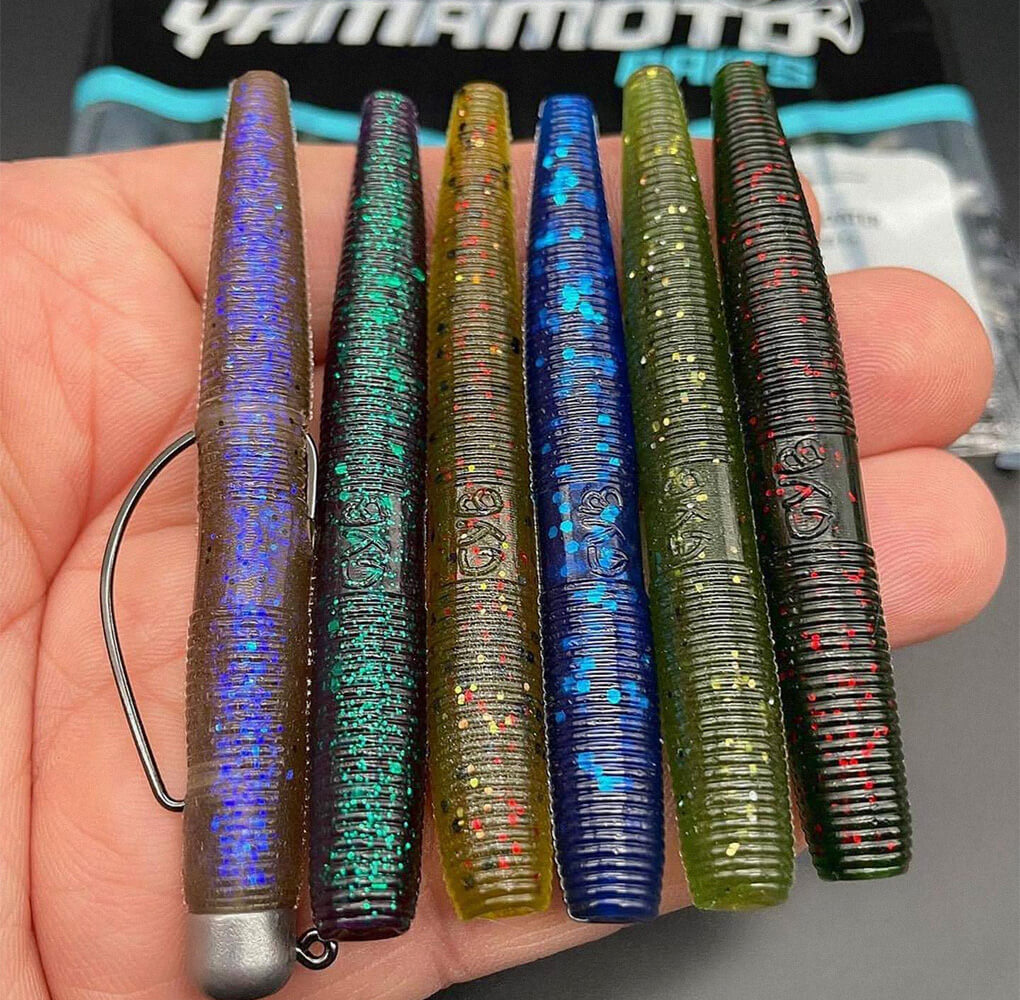
The Yamamoto Senko, one of the most user-friendly plastic baits ever made (Photo by Yamamoto Baits)
Tips for Beginners
If you’re a beginner and looking for a bait that will get plenty of bites, buy a bag of Yamamoto Baits Senkos.
Rig one of the plastic stick worms weightless and Texas style (with the point of the hook skin-hooked so that it is weedless) and slowly work it along weeds, rocks, docks, logs or stumps.
“A weightless Senko is effective because it never falls the same way twice,” Becker said. “It doesn’t make any sound and it’s very natural looking, the way it wiggles as it falls”
Conclusion
Even when you think you have the bass figured out, something always comes along to cause them to change their behavior.
But instead of trying to force-feed them the baits that worked before, keep an open mind. Downsize your baits during a cold front or in heavily pressured water.
Experiment with a drop-shot rig, which is a subtle, vertical approach to catching bass in clear water. And expand your use of the jerkbait when large schools of baitfish are around.
Follow those tips from Matt Becker and you’ll at least have a gameplan for dealing with challenging conditions.

